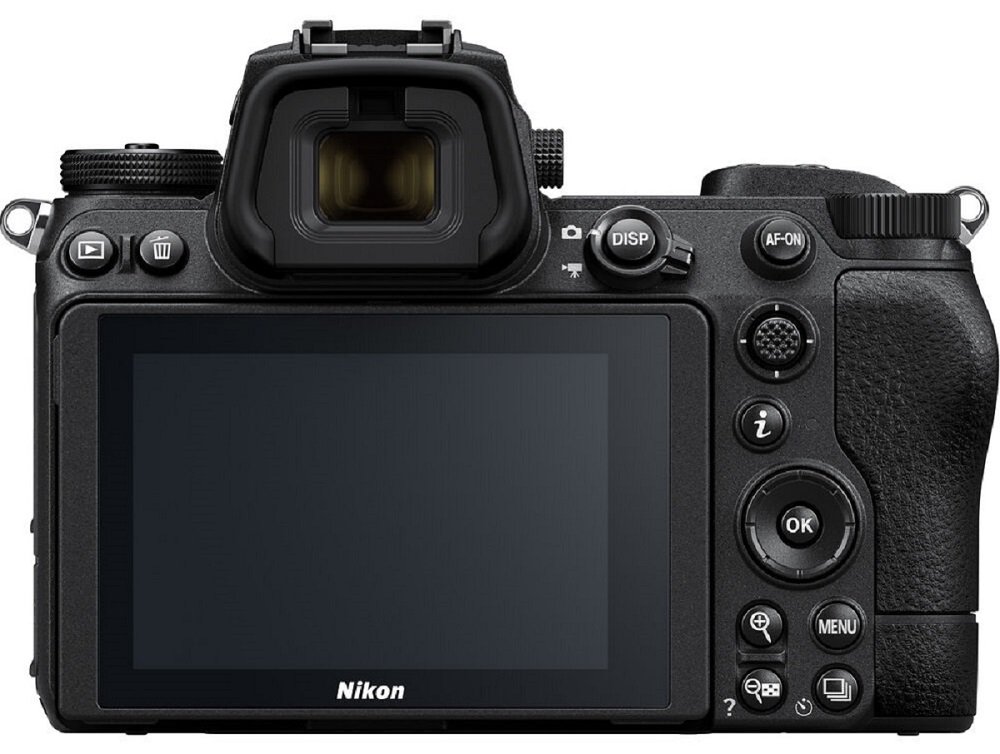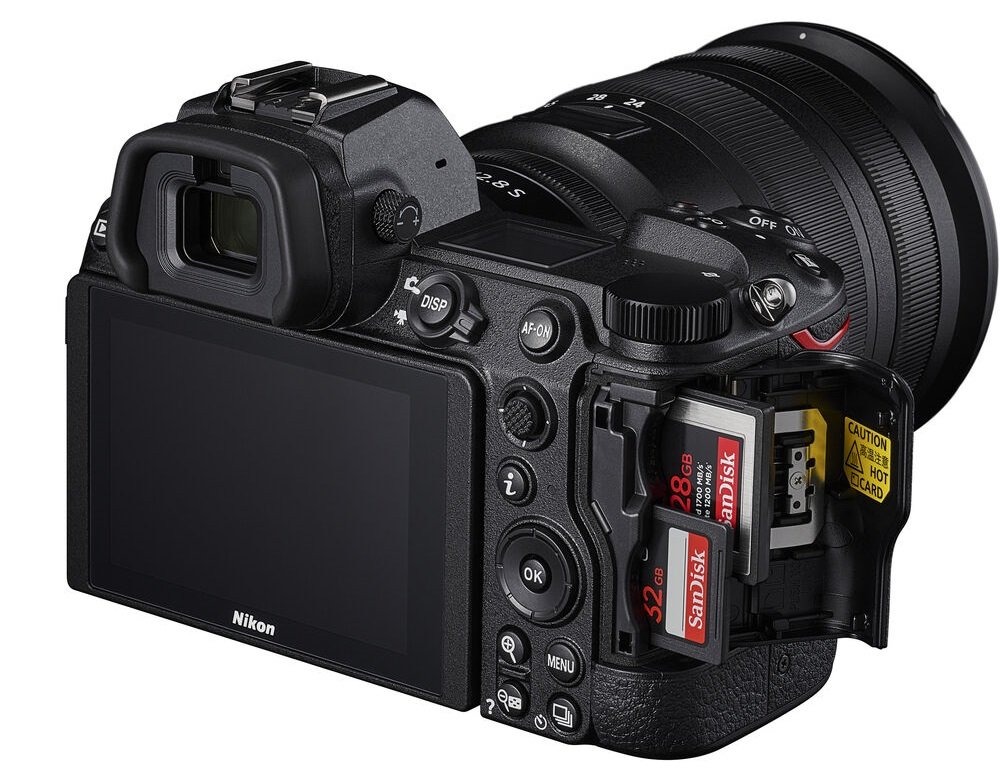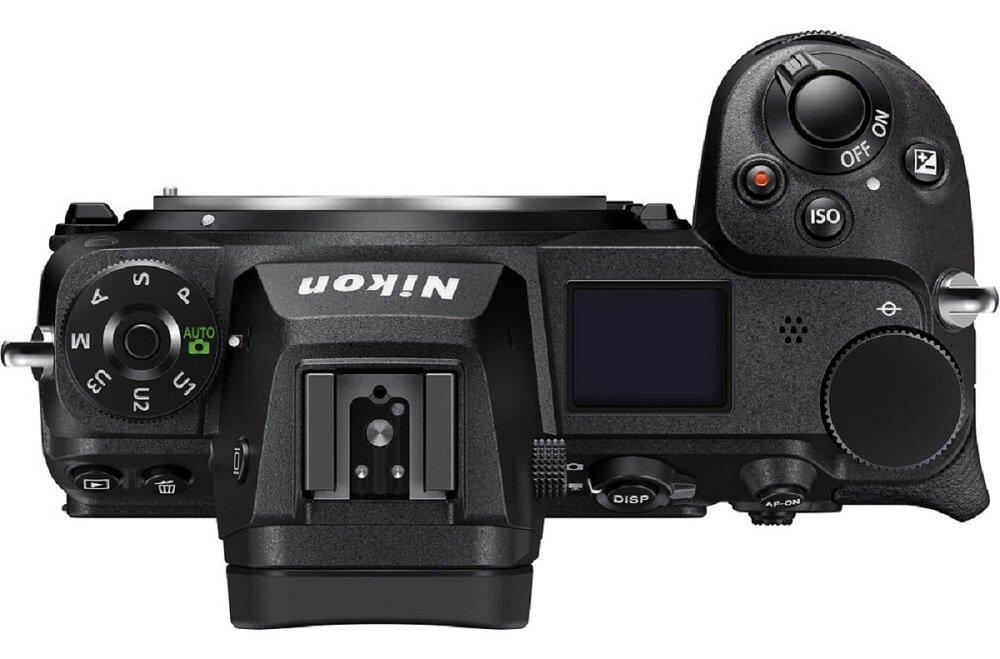I’ve been using the Nikon Z7II as my main camera for the past 2 years. Ever since the rise in popularity of mirrorless cameras, I was eagerly awaiting for Nikon to launch a mirrorless camera equivalent to my D810 so that I could make the switch. In September 2018, Nikon launched the Z6 and Z7 mirrorless cameras, they looked great, and were smaller and lighter than my D810, but they only had a single card slot. I know this is not the be-all and end-all, but because I travel a lot and have twice had a card failing (Luckily I never lost photos as I always use both card slots in backup mode), dual card slots were important to me.
In October 2020, Nikon announced the Z7II, which amongst other things, finally had dual card slots. I went to my local Nikon dealer and ordered the camera that same day.
Fast forward to January 2021 and my Nikon Z7II and Nikon 14-24 F2.8 Z finally arrived!
The Nikon Z7II is a high-resolution full-frame mirrorless camera. It still has the same 45.7MP full-frame BSI sensor as the Z7, but it's now powered by dual processors compared to the single processor in its predecessor. The exterior of the camera is pretty much identical, offering some of the best ergonomics on the mirrorless camera market.
Key specifications:
45.7MP BSI-CMOS sensor with native ISO 64
4K/60p video with 93% coverage of the sensor (a ~1.08x crop)
5-axis in-body stabilization (3-axis with adapted F-mount lenses)
10 fps burst shooting with single-point AF
3.69M-dot EVF, 3.2" 2.1M-dot rear screen
-3EV focusing with F2.0 lens
1 CFExpress / XQD card slot, 1 UHS-II SD card slot
New EN-EL15c battery, CIPA rated to 420 shots (LCD), 360 shots (EVF)
Compatible with new MB-N11 battery grip with vertical controls
At the time of its release, the Z7II was the highest-resolution model in Nikon's mirrorless lineup, focused on outright image quality. It remains one of the only cameras on the market that provides a low native ISO of 64: this helps maximize dynamic range for high-contrast scenes like sunset or sunrise landscapes.
Highlights
The Z7II has dual Expeed 6 processors – Sounds fancy, but what exactly does this mean and how this this help you?
To start with, the Z7 II is much better for wildlife and sports than its predecessor, with a burst speed of 10 fps with continuous autofocus, and (Most Importantly) the buffer is up to three times bigger, giving you a total of 77 12-bit Raw images before getting filled.
A reduction in blackout in the viewfinder isalso ideal for anyone shooting sports and wildlife.
Whats new compared to the Nikon Z7?
Dual card slots - Finally! The Nikon Z7II has one slot which supports CFExpress (Type B) and XQD cards, and a second slot that supports UHS-II compatible SD slot.
New Battery - The Z7II uses Nikon’s stalwart ENEL-15 battery, however, a new version of this has been released along with the Nikon Z7II, which is the EN-EL15C. This new battery boasts improved battery life to a CIPA-rated 420 shots using the rear LCD with energy-saving modes disabled. Finally, Nikon has also enabled direct charging using an included USB-C cable and transformer.
Firmware Updates - Finally you can update firmware via WIFI using the Snapbridge App! You no longer need to faff around with downloading a firmware update file, putting it on a formatted memory card, and then installing it from the car.
Video - Nikon has clearly put a lot of effort into improving the Video functions of the Z7II, it is significantly more competent than its predecessor. The Z7II is able to capture footage at 4K/60p with a slight (1.08x) crop. It will also output 10-bit N-Log or HDR (HLG) footage to a compatible external recorder, and you can output Raw video in 1080p if you're using the full sensor and 4K if you're using a cropped APS-C-sized region.
Body and handling
The bodies of the Nikon Z6II and Nikon Z7II are almost identical to their predecessors, the only visible difference is the memory card door, which is slightly taller on the new models to accommodate the dual card slots.
It seems that Nikon has used all their experience in making DSLR cameras to really perfect the feel and ergonomics of their new generation of cameras. The Nikon Z7II has a deep, comfortable grip, well-placed buttons and control dials, an crystal clear top display, and a reaffirming mode dial.
The battery door is easy to open.
The Z7II feels incredibly solid in the hand and is a super comfortable camera to use for extended periods of time. The touchscreen is surprisingly responsive, this is the first camera that I own with a touchscreen (The D810 did not have a touchscreen).
The Nikon Z7II has a 5-stops 5-axis image sensor shift. This is an impressive amount of stabilization built into the camera body, and any lens stabilization allows you to shoot at considerably lower shutter speeds than you would be able to normally.
Image quality
Nikon has used the same 45MP sensor in the Z7II that was found in the Z7. Why change it when it’s one of the best sensors around? The Image quality is outstanding across the board, with a very significant dynamic range and RAW files which offer a huge amount of flexibility in post-processing. Assuming you have exposed it correctly, the files are very clean and free of banding throughout the whole range (Highlights, Midtones, and Shadows).
45 Megapixels is plenty of resolution to produce stunning large format prints, although I prefer not to crop my images, I have absolutely no issue doing so if I need to as there is plenty of ‘Meat on the Bone’ in a 45 Megapixel file.
From tests I have seen, at high ISO, the Nikon Z7II produces better quality results than Canon, and pretty much identical results to newer Sony cameras.
Dynamic range
The Nikon Z7II sensor has excellent maximum color depth (26.3 Bits) and dynamic range(14.7 EV).
The sensor in the Nikon Z7II is a dual-gain sensor, designed to minimize noise at higher ISO. This actually provides some very impressive results, especially when shooting Astrophotography.
This dual gain sensor also means that you can underexpose further to protect the highlights.
Real-world testing has shown just how little noise the Nikon Z7II is adding to images. Even if you reduce exposure significantly, which again helps you capture additional highlight information, the Z7 II puts up a really impressive performance. The horrific banding that could sometimes occur in the very deepest shadows with the original Z7 is completely gone - Thank you, Nikon!
This improvement in dynamic range and maximum color depth means the Z7II can capture images with cleaner tones, all the way down into the deepest shadows.
Autofocus
The Z7 II's autofocus system is a significant improvement over my old D810, with continuous improvements from Nikon being introduced in the form of firmware updates.
There are plenty of new Autofocus functions, the most groundbreaking being the human and animal detection features which are now standard for most modern cameras.
The Z7II's autofocus system is very good, it’s not as good as the Nikon Z9, but there are very few cameras that come close to that performance.
Subject tracking is good, but I have not really used this much as I usually focus manually and work on a tripod.
Battery Life
There is so much misinformation about this subject that I have written a blog specifically about this. You can read it here. In short, the battery life is great and I have not had any issues with battery life in the past 24 months using the Nikon Z7II.
What could be improved?
The screen has very limited articulation, if it could rotate sideways, this would really help when shooting in portrait mode. I also find that the memory card door opens too easily when in my camera bag, this is because there is very little resistance, and just a slight bit of friction is enough to open the door.
Conclusion
Pros
Excellent image quality and dynamic range
ISO 64 can give IQ advantage over peers
Excellent ergonomics with well-placed controls
Effective in-body image stabilization
Good battery life
USB charging and a separate charger included
Dual card slots add an additional level of backup
SD, XQD, and CFexpress compatibility
Viewfinder is bright
Cons
The tilting screen is not as flexible as a two-way tilt or a fully articulated screen
Non-matched card slots demand the purchase of multiple formats
The resolution of the viewfinder isn't as high as some of its competitors the best of its peers
Limited range when controlling the camera remotely with the Snapbridge app.
The Nikon 7ZII is a fantastic camera, it is perfect for my needs as a landscape and astrophotographer. The improvements over the first version mean that I find very few things that can be improved.
The Nikon Z7II is very responsive in its operation and offers an experience that Nikon DSLR users will immediately feel at home with. There's a good degree of customization without it being necessary to completely reprogram the camera. The rest of the camera's ergonomics and handling make it an absolute joy to shoot with, and easy to handle in any situation, whether working on a tripod or handheld.
The fact that you can now (FINALLY) exceed the 30-second shutter speed limitation is a game changer in that I no longer need to carry intervalometers and spare batteries, I can shoot exposures in the camera of up to 15 minutes. Thank you, Nikon!
The SnapBridge app can also be used to control the camera remotely, showing a live view image on your Smartphone (Albeit with some lag) and allowing you to change settings remotely too. Bye Bye Intervalometers!
It’s also very handy that since all the new Z-Mount lenses use a fly-by-wire approach to focusing, whenever you turn the camera on, the lenses automatically focus on infinity!
I love that the Nikon Z7II has a native ISO of 64, in a lot of cases, using this and an aperture of F16 or F22 will give me a slow enough shutter speed to not need to use filters when shooting crashing waves or waterfalls.
The Nikon Z7II is not a cutting-edge camera and it doesn't have some of the newest features, however, the features that it does have are absolutely brilliant and are what most Landscape Photographers have been asking for from camera manufacturers for years on end!
The Nikon Z7II is a workhorse and is very well-priced compared to its competitors. Whilst writing this review, I’ve almost convinced myself to buy a second Z7II body to use as a second body and replaced my barely used Nikon Z6II.
Is it worth buying?
The Nikon Z7II is a fantastic camera, only surpassed in the Nikon lineup by the flagship Nikon Z9, but the Z9 is aimed at a completely different user base and costs more than double the Nikon Z7II. A lot of people have asked why I haven’t ‘Upgraded’ to the Nikon Z9. The response I give is that for my specific needs, the Z9 would actually be a ‘Downgrade’.
The whole point of moving to mirrorless was to reduce the size and weight of my camera gear. The Z9 is huge and incredibly heavy (It weighs more than double the Z7II). The reality is that the only valid reason for me to change the camera in the future is if Nikon releases a new camera that is smaller and lighter with the same performance, or the same size and weight but with a newer sensor or slightly higher resolution.













